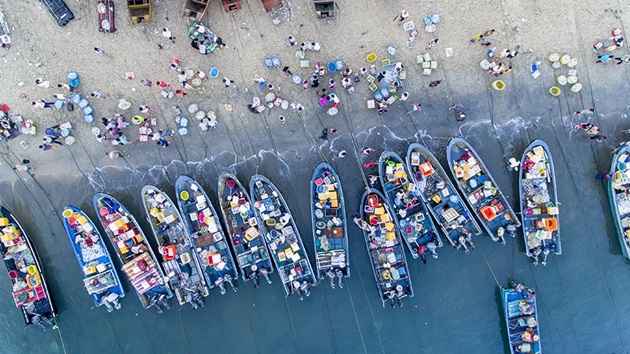
With the world’s population set to reach 10 billion by 2050, and food systems and the environment already under intense strain, fresh thinking is required to meet the challenges ahead. A good starting point would be recognising the contribution that our marine resources can make.
The ocean covers more than 70% of our planet and provides protein for over 3 billion across the globe, yet the role of seafood in helping feed our population, has been over-looked by governments, in favour of land-based solutions, such as starchy vegetables and the production of red meat.
The consequence of these policies is stark. According to the UN’s FAO’s State of Food Security and Nutrition in the World report health risks caused by calorie-rich nutrient-poor foods has led to millions more early deaths while the over-consumption of red meat contributes to serious but preventable illnesses, such as heart disease – now a leading cause of death globally.
A re-evaluation is underway, with the UN and leading scientists now urging governments to make aquatic foods central to their food policies and for good reason. According to the scientists behind the Blue Food Assessment – the work of over 100 professionals from 25 universities - aquatic foods are under-utilized even though they are some of the most nutrient-rich foods on earth.
Take wild fisheries as an example. The UN projects that this sector is due to produce 96 million tonnes of catch by 2030. However, experts estimate that another 16 million tonnes could be available, if there was no overfishing of our oceans.
This could have significant health benefits. A new analysis by the Marine Stewardship Council derived from Harvard University’s Aquatic Foods Composition Database, the most comprehensive global database of more than three and a half thousand aquatic food species and hundreds of nutrients, shows that this greater amount of 112 million tonnes of seafood could deliver essential nutrients and vitamins to many.
The increased catch could, for instance, reduce iron deficiencies in 4 million people and vitamin B12 deficiencies in 18 million people, helping to alleviate anaemia, a global public health problem that affects nearly half of young children under five and 40% of pregnant women globally.
Similarly, 38 million people missing out on healthy levels of essential Omega-3 fatty acids (DHA and EPA), which are mainly found in seafood, could also have their daily requirements if our oceans were fished sustainably. Of course, there is much more to fix than simply increasing the amount of seafood. Improving access is also an issue, with the need to ensure better availability for the most under-nourished populations. But having millions more tonnes of seafood to work with, is a promising start.
The challenge of feeding ourselves will also become harder, as the effects of climate change make themselves felt. But here’s where wild seafood also has an advantage over many other foods as it doesn't require land or freshwater, and results in fewer pollutants. And overall carbon emissions from seafood are significantly lower than from red meat production.
If the benefits of wild blue foods are to be realised, governments need to stop neglecting the ocean. With a third of global fish stocks still over-exploited, policy-makers must put the management of ocean at the heart of their food strategies. They need to set enabling rules, to ensure that fishers who are managing the ocean sustainably are recognised, consulted and supported.
It is also not just about building progress but ensuring that we are not sliding back from the gains already made. This is an attainable goal and one which is supported by the public. Robust fisheries management, backed by governments, business and fishers, can deliver progress. A recent study revealed that fish stocks targeted by sustainable fishers were healthier and more resilient than those which were not. Independent consumer research carried out across 23 markets, also shows that alongside growing anxiety about the future of our ocean, there is a greater demand than ever for sustainably produced seafood.
Effective change to improve health and livelihoods around the world is possible, but only if policy makers wake up to the value of protecting our immense marine resources for future generations.
This article was originally published at World Economic Forum



